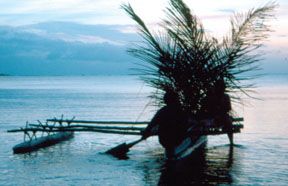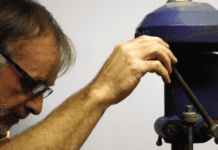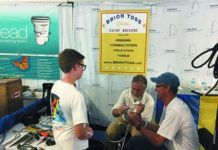Its always interesting putting together a report on sails because you are bound to find some strong opinions, not only from the pros who make the sails, but the sailors who buy them.

With such a range of preferences (quirks, some might say), cruisers can be a sailmakers nightmare. Each cruising sail must be, to some degree, custom-built. As our market scan of asymmetrical sails (See “Riding the A-train,” this issue) reveals, the road to any good sail runs two ways: The buyer must make clear his experience and expectations, and the sailmaker needs to understand them. If a sailmaker wont take time to listen, answer your questions and discuss options, walk away and find another.
The asymmetrical spinnaker presents serious challenges for sailmakers. Modern working sails can employ various laminations of fibers and films to maintain ideal shape. Spinnaker material is limited by the sails primary function: It needs to be light. And with three movable corners, shape is, literally, a moving target. A sailmaker can get everything right, but if the sail is not set correctly, frustration will quickly set in.
As an official inspector for the Volvo Ocean Race, Editor-at-Large Nick Nicholson got an up-close look at the highest evolution of ocean-going sails (See “Life at the Extreme,” this issue). He also witnessed first-hand what happens when sailboat designers, builders, and crews test the laws of physics on the worlds great oceans. No one expected the new Volvo Open 70s to circle the world unscathed, but the frequency and severity of the boat failures indicate that some boats were driven beyond their limits, or engineered and built for a different sort of race.
The good news is that cruising sailors will surely benefit from many of the lessons that emerge via the Volvo. The technology is already trickling down. Custom can’ting-keel cruisers are now a reality, and the navcomm centers on some cruisers are not far behind those on VO 70s.
Oddly, reading Nicks article brought to mind an entirely different sort of craft that my wife and I encountered while cruising in Vanuatu. Each morning, villagers of Epi Island would depart in outrigger canoes, riding the land breeze to a nearby islet where they tended small plots of cassava. In the afternoon, they would ride the sea breeze home again. Their sails were simple palm fronds, but they were, in my eyes, a perfect solution. The image reminded me that whether youre sailing a dugout canoe or a Volvo 70, ingenuity trumps technology when you want to get there and back again.
Darrell Nicholson
Editor



































